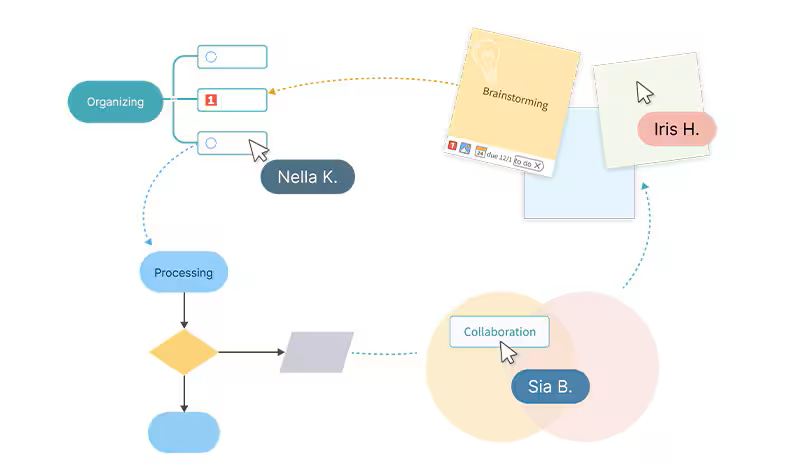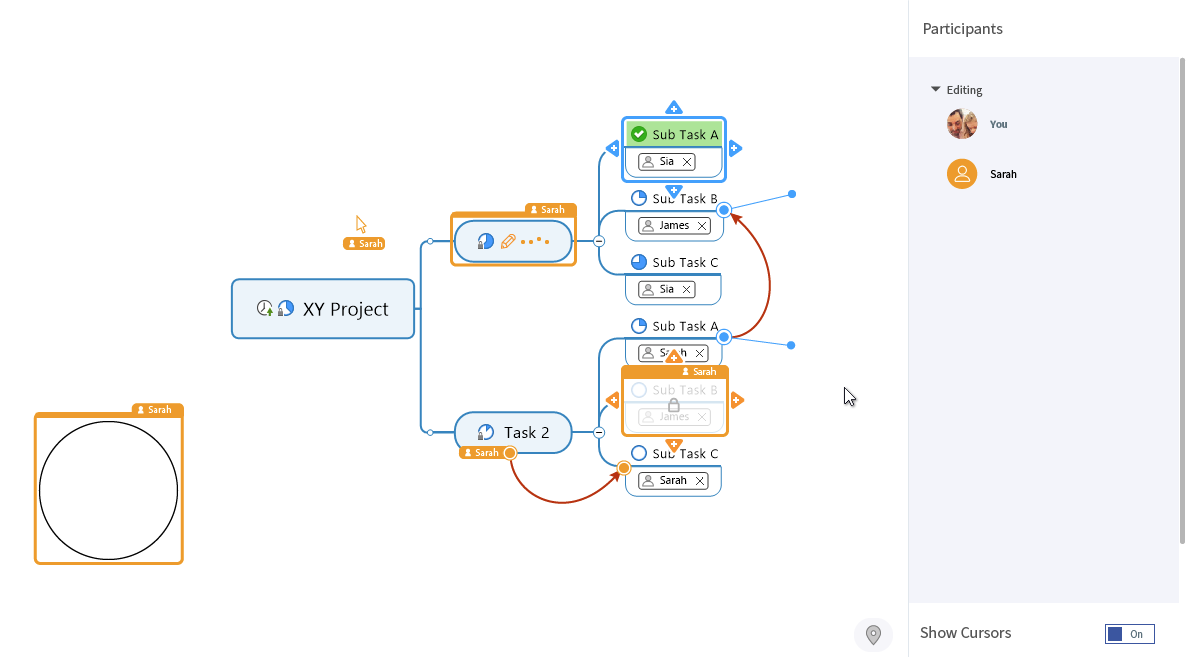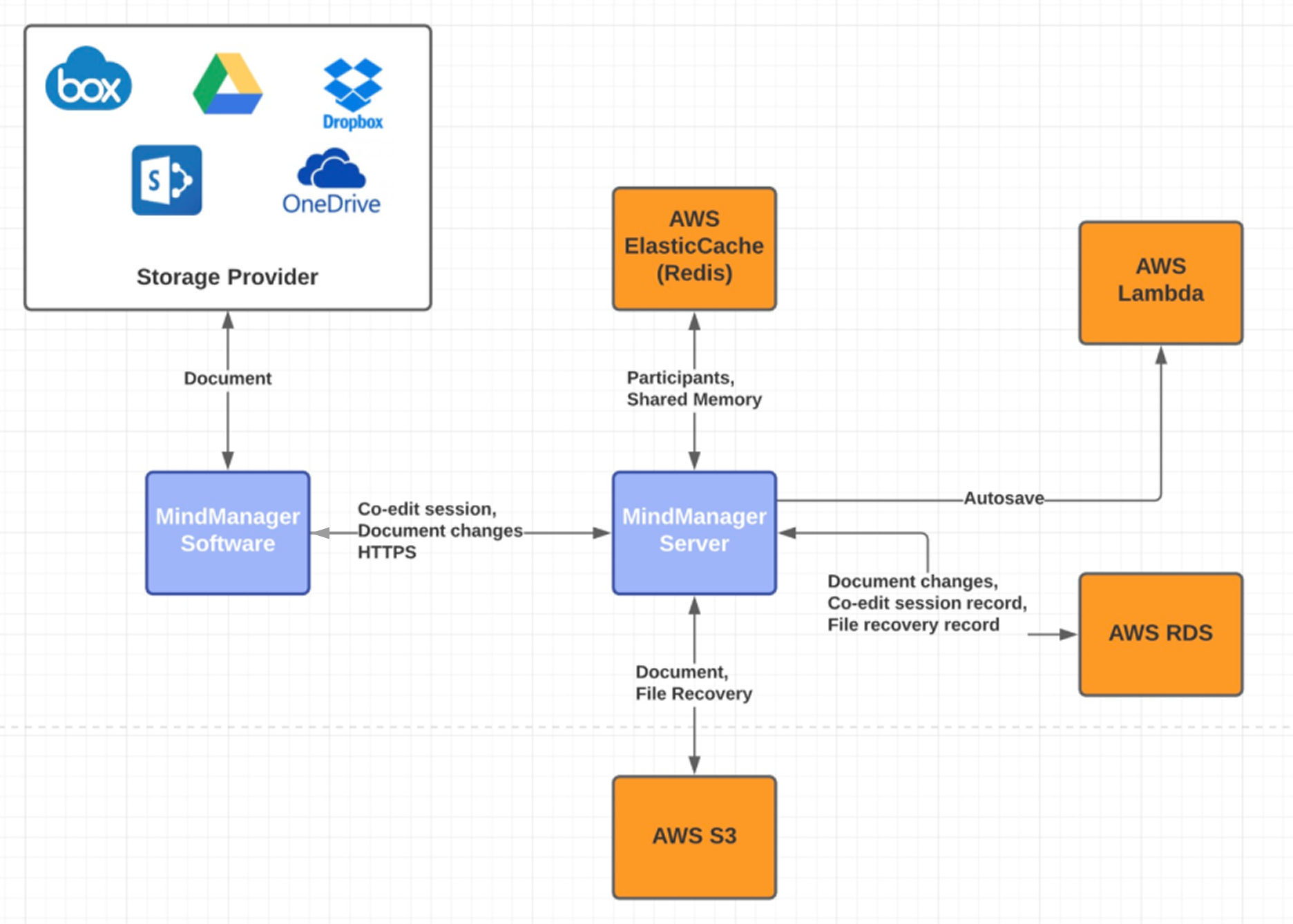Building Real-Time Collaboration Across Five Platforms - Without Compromising Speed or Consistency
Client Background
Our client, a global software company behind MindManager, provides productivity and collaboration tools to millions of users worldwide. MindManager helps teams visually organize ideas, manage complex projects, and plan strategically through dynamic mind maps.
To meet the needs of distributed workforces, the client aimed to evolve the product from a single-user desktop tool into a real-time collaborative platform that allows multiple people to edit the same map simultaneously - across Windows, Mac, Web, and mobile.
Business Challenge
Traditional file-based mind mapping slowed modern teams. Collaboration meant passing files back and forth, causing version conflicts, delays, and lost progress.
The client needed to:
- Enable simultaneous co-editing of large maps with attachments.
- Maintain sub-second sync for dozens of concurrent users.
- Preserve document integrity and order across multiple platforms.
- Handle failures gracefully - reconnections, autosave, network drops.
- Deliver all of this securely and at global scale.
Key Achievement
We enabled real-time collaboration for complex XML-based documents with:
- Sub-second latency for operation propagation.
- Dozens of concurrent users editing the same map.
- Support for attachments over 10 MB per operation.
- Cross-platform consistency between desktop, web, and mobile clients.


How did we make it work?
Real-Time Synchronization

Instead of traditional Operational Transformation (OT), we used delta-based XML group operations - better suited for MindManager’s complex document structure (nodes, styles, attachments, metadata).
- Concurrent edits: resolved deterministically by server order - last write wins, avoiding invalid states.
- Selection conflicts: broken by deterministic rules (e.g., email hash comparison).
- Attachments: transmitted as base64 within XML; Redlock prevents overlap during save.
This pragmatic design achieved consistency without thousands of custom OT functions.
Cross-Platform Consistency

Every client - Windows, Mac, Web, iOS, Android - uses the same XML GroupDelta schema and MindManager Core engine (compiled to WebAssembly or transpiled JS for web builds).
Session startup follows a cache-validation model:
- First user uploads to S3 if cache is cold.
- Subsequent joiners fetch from S3 for faster onboarding.
Platform optimizations:
- Web: operation pagination to bypass browser memory limits.
- Desktop: native file locking and fast XML parsing.
- Mobile: aggressive reconnection and state buffering when backgrounded.
Conflict Resolution

Instead of traditional Operational Transformation (OT), we used delta-based XML group operations - better suited for MindManager’s complex document structure (nodes, styles, attachments, metadata).
- Concurrent edits: resolved deterministically by server order - last write wins, avoiding invalid states.
- Selection conflicts: broken by deterministic rules (e.g., email hash comparison).
- Attachments: transmitted as base64 within XML; Redlock prevents overlap during save.
This pragmatic design achieved consistency without thousands of custom OT functions.
Autosave and Scalability

We offloaded session autosave to AWS Lambda to keep Node.js servers stateless and horizontally scalable.
Redis Pub/Sub and AWS SQS handle inter-node event propagation; CloudFront and ALB balance global traffic.
The system now supports thousands of active sessions daily with 99.9% autosave success and zero cross-platform drift.
Main Technical Challenges
01 Ordering & Consistency Across Platform

Ensuring every user saw the same document state in real time - achieved through Redlock and a global order counter.
03 Large Attachments Handling

Enabled >10 MB operations with buffering and base64 streaming, keeping sync latency under one second.
05 Conflict-Free XML Updates

Delta-based XML operations replaced OT, reducing complexity while maintaining correctness.
02 Reconnection & Autosave Reliability

Lambda-based autosave and resumable operation queues eliminated data loss during network interruptions.
04 Cross-Platform Synchronizatio

Unified XML schema and shared MindManager engine guaranteed identical outcomes across desktop, web, and mobile.

Value Delivered by DevPulse
- Seamless real-time collaboration - users co-edit maps live without version conflicts.
- Cross-platform reliability - identical behavior on Windows, Mac, Web, iOS, and Android.
- Scalability at enterprise level - thousands of concurrent sessions daily.
- Fast, stable performance - sub-second latency even on large, attachment-heavy maps.
- Future-proof design - modular architecture ready for cloud integrations and analytics.
Development Timeline
18-24 months (from prototype to production rollout)
Team Composition
- 6 Developers (C++, C#, JS, Mobile)
- 2 QA Engineers
- 2 Product Manager
- DevOps Engineer
- 1 Designer
Technology
- Frontend: React + TypeScript, WPF (C++/C#), Cocoa (C++/Swift), Kotlin, Swift
- Backend: Node.js, Express.js, Socket.IO, MySQL, Redis, AWS SQS, Lambda, S3
- Infra: Docker, ECS/Kubernetes, CloudFront, Datadog, TLS 1.2+, Auth0/Cognito
Location
Germany
Methodology
Real-time, event-driven microservices architecture with distributed locking and serverless autosave

Vlad Tukhtarov
CEO devPulse
Founded DevPulse in 2014, driving product-led growth through innovative, high-performance software architectures and strategic technology adoption.
Request A Free No-Obligation Quote
By clicking "Send A Message", You agree to devPulse's Terms of Use and Cookie Policy.



